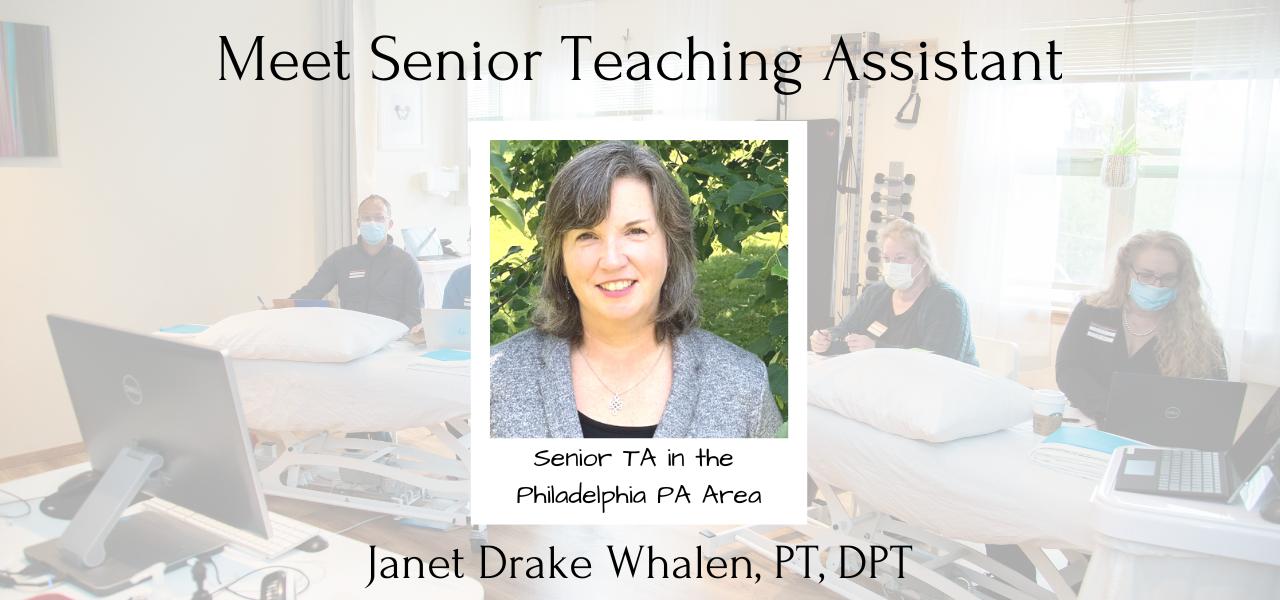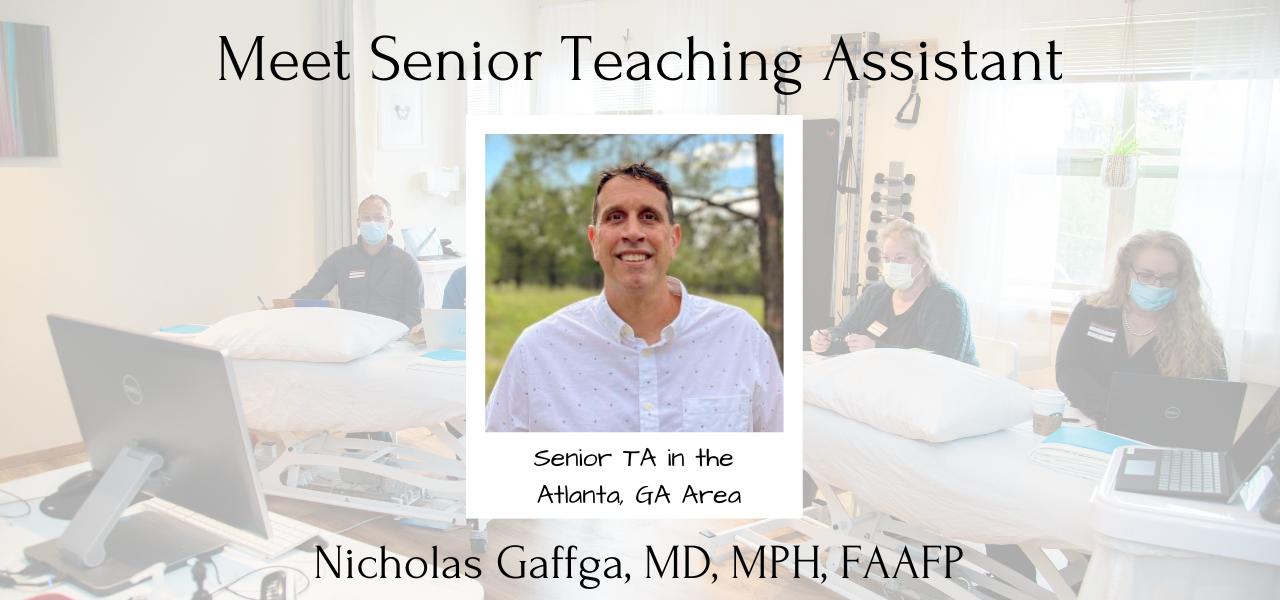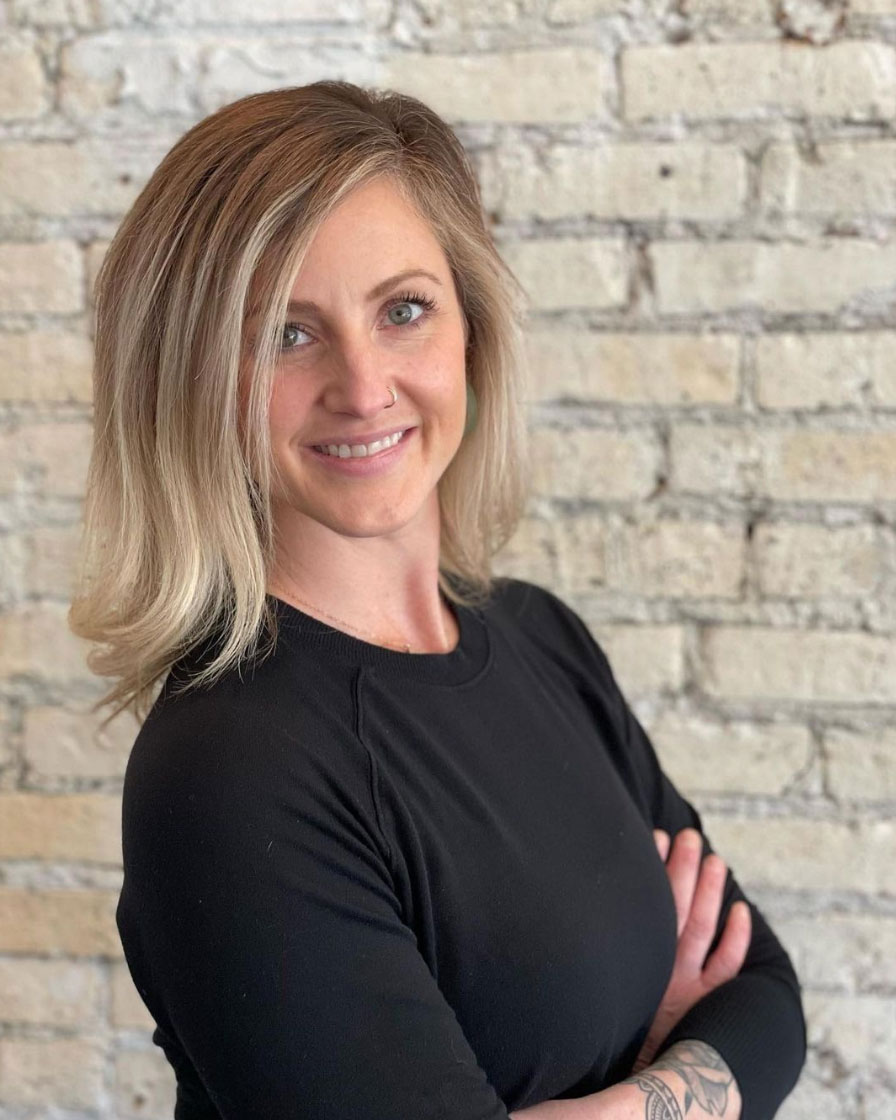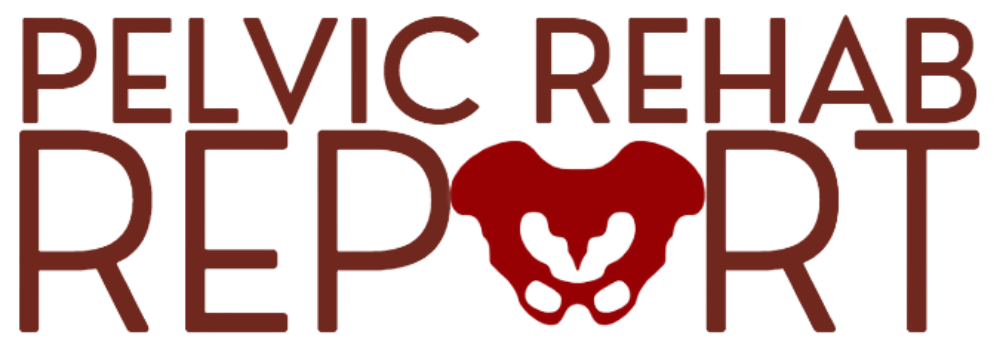
Pauline Lucas, PT, DPT, WCS, NBC-HWC, PYT, CMMI is the is the author and instructor of the Mindfulness and Meditation for Pelvic Health course. Pauline works as an integrative physical therapist, specializing in pelvic health, at the Mayo Clinic in Arizona. As faculty member at the Mayo Clinic Alix School of Medicine she is director of the Health Coaching course and teaches Introduction to Lifestyle Medicine. Additionally, she is the creator and instructor of a successful meditation program for Mayo Clinic employees and patients. Pauline is a frequent presenter for local, regional, and national medical conferences on topics related to mindfulness, women’s health, and integrative medicine. She presented twice at CSM, both on the therapeutic use of yoga for chronic pain as well as the use of mindfulness and meditation in rehabilitation. She is the owner of Phoenix Yoga and Meditation, www.phoenixyogaandmeditation.com
In 2014, JAMA published the findings of a systematic review on the use of mindfulness meditation programs for stress-related outcomes like anxiety, depression, and pain, in diverse groups of adults.1 The evidence suggested that mindfulness meditation programs could help reduce anxiety, depression, and pain in some clinical populations. The authors, therefore, concluded that clinicians should be prepared to talk with their patients about the role that a meditation program could have in addressing psychological stress.
As pelvic health providers, we frequently work with patients dealing with significant psychological stress, both the result of their condition, but often also a contributor to their symptoms. What is our role in addressing those stressors? And how do we manage our own well-being when providing care for patients with high-stress levels and sometimes strong emotions?
Colleagues sometimes ask me when I use mindfulness during my workday. My answer is that I aim to use mindful awareness all day; when I wash my hands, when I greet my patient, as I listen to their story, when holding space for a patient with strong emotions, when touching during an exam or treatment, and while staying present for myself at the same time.
The science is clear: when we as healthcare providers practice mindfulness, both we and our patients benefit. A mindful therapist helps the patient feel safe and heard, which improves the therapeutic relationship; one of the factors determining a positive or negative treatment outcome.2 Of course we need to have good clinical skills, but the therapist’s mindful presence is like “the secret sauce” that enhances everything else they provide in their interactions.
There are many studies on the effects of mindfulness training on mental health providers. Outcomes such as increased compassion, better counseling skills, less stress, and better quality of life, likely apply to pelvic health rehabilitation professionals as well. 3
These days we can easily learn the basics of mindfulness through various Apps, online classes, books, and podcasts. But with mindfulness has many aspects, and even some contra-indications, learning to create a personal practice and skillfully navigate the integration of mindfulness practices in patient care requires more in-depth training with a qualified instructor.
Would you like to learn about the origins of and the science behind mindfulness, create a personal mindfulness and meditation practice, explain mindfulness to your patients (without ever using the word mindfulness), what techniques to choose, and when to limit or avoid mindfulness practices with your patient? Join me for Mindfulness and Meditation for Pelvic Health on October 22-23.
References:
- Goyal M, Singh S, Sibinga EMS, et al. Meditation Programs for Psychological Stress and Well-being: A Systematic Review and Meta-analysis. JAMA Intern Med.2014;174(3):357–368. doi:10.1001/jamainternmed.2013.13018
- Brito, G. Rethinking Mindfulness in the Therapeutic Relationship. Mindfulness5, 351–359 (2014). https://doi.org/10.1007/s12671-012-0186-2(accessed August,31, 2022)
- https://www.apa.org/monitor/2012/07-08/ce-corner (accessed August,31, 2022)
Mindfulness and Meditation for Pelvic Health

Course Dates:
October 22-23, 2022
Price: $360
Experience Level: All
Contact Hours: 12
Description: This 2-day virtual course is geared toward the pelvic rehabilitation professional to enhance both their personal and professional life satisfaction and serve their patients in a more mindful way. You will learn how chronic stress impacts health and well-being and the latest research on the benefits of mindfulness training for both patients and healthcare providers. You will personally experience various mindfulness practices such as body scan, breath awareness techniques, mindful movement, and meditation, so you can experience the power and benefits first-hand. We will explore how to apply mindful awareness in clinical practice to improve your patients’ experience and treatment outcomes, in addition to making your day more peaceful and productive as you enhance your ability to stay focused and become less reactive to triggering situations. You will return to your clinic with the ability to explain mindful awareness and its benefits to your patients and introduce mindfulness into your patient care. You will be able to begin or deepen your own mindfulness practice and apply practical mindfulness skills to a busy workday and personal life to promote your own happiness and well-being.

Today The Pelvic Rehab Report is featuring two short interviews with instructor teams Alyson Lowrey & Tara Sulivan who teach Pain Science for the Chronic Pelvic Pain Population, and Sandra Gallagher & Caitlin Smigelski who teach Transgender Patients: Pelvic Health and Orthopedic Considerations.
The Pain Science for the Chronic Pelvic Pain Population instructors Alyson N Lowrey, PT, DPT, OCS &Tara Sullivan, PT, DPT, PRPC, WCS, IF answered the following two questions:
What Is Pain?
All pain occurs in the brain. Whether it is from acute tissue injury, nerve injury, or chronic pain, all pain has to be interpreted by the brain. How do you explain to a patient that their pain may not be from tissue damage, but from their brain interpreting something as painful that shouldn’t? While their pain may be in their brain, it is NOT in their head!
Pelvic pain is complicated because of a phenomenon called pelvic organ cross-talk. Your brain has a really hard time determining which pelvic organ or muscle is having pain or sensations, so signals can get crossed. Patients can present with uterine pain that can cause bowel or bladder pain and vice versa. We commonly see this with endometriosis and interstitial cystitis. Another example is the prostate and bladder. Prostatitis may present as an overactive bladder. This makes our jobs more difficult because we have to be able to determine the true source of a patient’s pain and understand that their pain may not be coming from an obvious source.
What is pain neuroscience education (PNE) and how can it be used?
Pain neuroscience education (PNE) is the explanation of the neurophysiological changes in the central nervous system to patients that have chronic pain. It is explaining pain, sensitization, and all the factors that can be contributing to their pain and abnormal sensations.
PNE typically decreases the threat value of pain, diminishes catastrophic thinking about pain, and facilitates a more active coping strategy. In the Pain Science for the Chronic Pelvic Pain Population, you will leave with the tools to combine pain science education with current interventions for a more effective treatment.
The Transgender Patients: Pelvic Health and Orthopedic Consideration instructors Sandra Gallagher, PT, DPT, WCS & Caitlin Smigelski, PT, DPT answered the following two questions:
What made you want to create this course?
We created this course on rehabilitation in gender-affirming care in 2018 because, at that time, nothing like it existed. We had learned so much from working with patients preparing for surgery and knew we need more information. Through attending conferences, we had opportunities to talk with experts in the field including surgeons, endocrinologists, primary care physicians, and social workers. Combined with researching additional topics, we made the course we wish we could have taken: a course that bridges physical rehabilitation considerations with medical and surgical information on transgender care.
Today, many brief courses and videos about gender-affirming care exist. You can now find courses and videos that address trauma-informed care, language aspects of gender-affirming care, and physicians and surgeons speaking on their procedures. We think this is great and encourage people to continue to seek out these learning opportunities! Our goal is to expand on the perspective of the rehab professional by offering a course that has both depth and breadth.
Our course has evolved to a hybrid format with pre-recorded self-paced lectures and live webinar content. We know that some participants are well versed in LGBTQ topics and are trained in providing trauma-informed care. For other participants, our course may be the first time they are exploring topics like sex, gender, sexuality, trauma-informed care, and gender-affirming language. The content in the pre-recorded lectures allows participants to work at their own pace, whether it is review or brand new information and allows everyone to have a similar foundation when we meet for the live portion.
What is your message to practitioners about gender-affirming care?
Our message to participants who are just starting their journey on gender-affirming care is to remember that gender is not genitals and that undergoing gender-affirming procedures is not strictly about sexual activity options. Sometimes people get so focused on the genital surgery or changes, that they forget the person. Every patient's path will be a bit different and there is more to gender-affirming care than peri-operative rehab.
Keep learning! Engage with professional organizations like WPATH, watch videos featuring gender diverse individuals, practice language with coworkers, and attend grand rounds. Many university hospitals now have virtual rounds that are available live or as recordings. There is so much information available if you search for it!

Pain Science for the Chronic Pelvic Pain Population
Course Date: October 8-9, 2022
Price:$400
Experience Level: Beginner
Contact Hours: 12
Description: This course is designed to expand the participant's knowledge, experience, and treatment in understanding and applying pain science to the chronic pelvic pain population including endometriosis, interstitial cystitis, irritable bowel syndrome, vaginismus, vestibulodynia, primary dysmenorrhea, and prostatitis. This course provides a thorough introduction to pain science concepts including classifications of pain mechanisms, peripheral pain generators, peripheral sensitization, and central sensitization in listed chronic pelvic pain conditions; as well as treatment strategies including therapeutic pain neuroscience education, therapeutic alliance, and the current rehab interventions' influence on central sensitization.
Lecture topics include the history of pain, pain physiology, central and peripheral sensitization, sensitization in chronic pelvic pain conditions, therapeutic alliance, pain science and trauma-informed care, therapeutic pain neuroscience education, the influence of rehab interventions on the CNS, and specific case examples for sensitization in CPP.

Transgender Patients: Pelvic Health and Orthopedic Considerations
Course Date: October 8,2022
Price: $500
Experience Level: Beginner
Contact Hours: 17
Description: This course is appropriate for any physical rehabilitation professional, regardless of their specialty area, who has an interest in better serving people who are gender diverse. There is specific content aimed at teaching pelvic health therapists how to expand their skills for working with people of all gender identities. There will be particular education regarding gender-affirming genital surgeries as well as discussion of other gender-affirming surgeries and medical interventions that people transitioning might choose.
Often times therapists think of genital surgeries and sexual function when contemplating work with transgender people. However, therapists have far more to offer transgender patients. For providing optimal care, knowledge of the intricacies of gender transition is essential. We provide that overview in this course. Topics covered include:
- Societal influence on gender transition including interactions with health care providers
- Recognizing difference between sex, sexuality, and gender
- Understand the complexities of the legal system for the person transitioning gender
- Tips and tools for a trauma-informed intake and examination
- Health effects of hormones for gender transition as related to differential diagnosis in rehabilitation
- Supporting healing after gender-affirming surgery
- Operative procedures for face and chest
- Operative procedures for masculinizing and feminizing genital surgery
- Pre-operative evaluation, treatment, and education issues
- Post-operative evaluation, treatment, education, and follow-up for genital surgeries
- Outcome measures with rehab focus for people undergoing gender-affirming surgeries
- Fertility and pregnancy in gender diverse people.

Rachna Mehta, PT, DPT, CIMT, OCS, PRPC is the author and instructor of the Acupressure for Optimal Pelvic Health course. Rachna brings a wealth of experience to her physical therapy practice and has a personal interest in various eastern holistic healing traditions.
One of the main reasons I got into Acupressure was because of my complex orthopedic patients. People who were struggling with chronic pelvic pain, and a lot of my patients were doing complementary and alternative medicine ( CAM ) modalities like Acupuncture and Yoga. That got me interested, because as they were going along with those programs in addition to therapy, the question they always asked was what could they do themselves.
I started looking into Acupressure and found that there was such a big knowledge base, but the information was very scattered. If I found a study that talked about Acupressure points, I wouldn’t know where they were located, what they were good for, where I could use them, or how I could integrate them into my practice. I started to piece the information together and that was the conception of this course Acupressure for Optimal Pelvic Health.
Acupressure for Optimal Pelvic Health is a two-day course with about an hour and a half of pre-recorded lectures that go over the history of Acupuncture (because Acupressure draws from that), Traditional Chinese Medicine (TCM) concepts, getting our basics down, and terminology. We talk about the meridian channels, Ying and Yang, and where the meridians and Acupoints are located on the body. Next we delve into the scientific and evidence-based perspectives by taking a look at all of the evidence for Acupuncture and Acupressure.
From there we go into how to read the chart and what are the abbreviations. We have 12 main meridians that we look at and out of those there are 4 that we focus more on for pelvic health. Those are the Bladder, the Kidney, the Stomach, and the Spleen meridians - those have the most points that we focus on. There are also other important points all over the body that help and stimulate the nervous system and tap into the peripheral nervous system, the Qi, and improve the physiological functioning of the organs.
Lectures also talk about the fascial and connective tissue networks, and how Acupoints are located along fascial planes. We discuss the connections of the fascia with the peripheral nervous system and how Acupoints have high electrical conductivity on the surface of the skin (there are instruments that can measure this). Next, we tackle the question of how Acupoints tap into the central nervous system and how there are internal connections to the different organs that can help to heal and promote physiological wellbeing. Acupressure can treat conditions like anxiety, incontinence, constipation, dysmenorrhea and a host of pelvic health conditions. Acupressure is good for so many different things.
On day two of class, we dive into Yin yoga. Yin yoga is a very beautiful form of yoga. It’s a quiet, meditative form of yoga, and it connects the Acupressure points by putting the body in specific poses that stress those tension lines along the meridians. It is a mindful way of putting the body in specific positions and supporting the body with props. It is also a meditative state in which we stay in each pose for about 3 to 5 minutes, and we become still. The main principles of Yin Yoga are that we arrive in a pose, become still and stay for time. We get into a pose and basically, we are meeting our body where it is. It’s also a lot of acceptance and mindfulness. Stillness is something that a lot of people have a hard time doing, be it physical or stillness of the mind.
The beauty of us using Acupressure is that we are musculoskeletal specialists and we are so hands on with all of our patients. If we know exactly where the points are, we can work on those points as we are working on other things such as stretching a muscle, doing range of motion, or just working on fascia. There are a lot of things that we can do for our pelvic health patients in particular, but this is applicable to even our orthopedic patients.
Acupressure is truly a mind-body practice that can be taught to patients in their journey towards self-care, holistic healing and wellness.
Acupressure for Optimal Pelvic Health

Course Dates:
October 15-16, 2022
February 4-5, 2023
June 3-4, 2023
October 14-15, 2023
Price: $450
Experience Level: Beginner
Contact Hours: 12.5
Description: This is a two-day course that offers an evidence-based perspective on the application of Acupressure for evaluating and treating a host of pelvic health conditions including bowel, bladder, and pelvic pain issues. The course explores a brief history of Acupressure, its roots in Acupuncture and Traditional Chinese Medicine (TCM), and presents current evidence that supports the use of complementary and alternative medicine as an adjunct to western medicine. TCM concepts of Meridian theory and energy channels are presented with scientific evidence of Acupoints transmitting energy through interstitial connective tissue with potentially powerful integrative applications through multiple systems.
Lectures will present evidence on the use of potent Acupressure points and combinations of points for treating a variety of pelvic health conditions including chronic pelvic pain, dysmenorrhea, constipation, digestive disturbances, and urinary dysfunctions to name a few. Key acupoints for decreasing anxiety, and stress and bringing the body back to a state of physiological balance are integrated throughout the course. Participants will be instructed through live lectures and demonstrations on the anatomic location and mapping of acupressure points along five major meridians including the spleen, stomach, kidney, urinary bladder, and gall bladder meridians. Key associated points in the pericardium, large intestine, small intestine, lung and liver meridians as well as the governing and conception vessels will also be introduced. The course offers a brief introduction to Yin yoga and explores Yin poses within each meridian to channelize energy through neurodynamic pathways to promote healing across multiple systems. Participants will learn how to create home programs and exercise sequences and will be able to integrate acupressure and Yin yoga into their orthopedic and pelvic health interventions.

Holly Tanner is the Director of Education at Herman & Wallace and has curated and instructs the Male Pelvic Floor course. Male Pelvic Floor was first taught in 2008 and has since been expanded to include 22 contact hours. This current content includes 7 pre-recorded lectures and 2 full days of live lectures and labs, allowing more time for hands-on skills in examination and treatment. The schedule covers bladder, prostate, sexual health, and pelvic pain, and further discusses special topics like post-vasectomy syndrome, circumcision, and Peyronie’s disease.
Post-orgasmic illness syndrome (POIS) is a condition that encompasses a cluster of clinical symptoms. The literature most often reports this presentation in men as a response that occurs shortly after ejaculation and that lasts a period of days or even a week or longer. Symptoms may include transient, flu-like symptoms including, but not limited to headache, sore throat, general myalgia, exhaustion, and cognition that is impacted during the reaction. Understandably, people who experience post-orgasm illness often limit sexual encounters, demonstrate avoidance of sexual function, experience interference in relationships with partners, and report lost time from work and other activities. The diagnosis may be primary (occurring from first ejaculation experience) or secondary (acquired later in life.)
Despite the recognition that clinical presentation can be highly variable, diagnostic criteria have been described by Waldinger and colleagues in 2011 (Part 1) and are based on their study of 45 Dutch Caucasian men with POIS.
Preliminary diagnostic criteria for post-orgasmic illness syndrome include 1 or more of the following:
- Flu-like symptoms, fatigue, muscle weakness, feeling feverish, sweating, mood disturbances or irritation, memory and concentration difficulties, nasal congestion, watery nose, and/or itchy eyes.
- Symptoms occur immediately after or within hours after ejaculation
- Symptoms occur almost always, or in more than 90% of ejaculation events
- Symptoms last for 2-7 days
- Symptoms disappear spontaneously
There are various theories postulating the reason for developing POIS including the autoimmune-allergy hypothesis, cytokine and neuroendocrine disruption, and endogenous m-opioid receptors (orgasm uses large quantities of endogenous opioids). One of the primary reasons that immune reaction to a patient’s own semen has been a strong theory is because sexual activities without ejaculation often do not produce the reaction. Hyposensitization with autologous semen has proven beneficial as a desensitization therapy. (Waldinger et al., 2011, Part 2) Other treatments that may be used include antihistamines, SSRIs, benzodiazepines, and NSAIDs. Comorbidities of POIS reported by Natale and colleagues (2020) include erectile dysfunction, allergies, chronic pelvic pain, autoimmune conditions, and depression and anxiety.
From the standpoint of pelvic rehabilitation, there is much to offer to alleviate symptoms and promote function in patients who have POIS. Genitopelvic pain during or after ejaculation, urinary hesitancy, and difficulty with bowel movements can accompany the syndrome - all complaints that warrant evaluation typical of any patient who has abdominopelvic dysfunction. In the men who have presented to me with this diagnosis, a period of sexual dysfunction including premature ejaculation was described prior to developing POIS. One patient, in particular, described a period of a decade or more of suppressing sexual desires, including masturbation, due to beliefs in his community. When he did masturbate for the first time, he developed post-orgasm illness immediately. I have also observed a tendency to report hypersensitivity to touch, with any palpation to the lower abdomen or groin area causing significant discomfort, and even spontaneous erection or orgasm that was difficult for the patient to manage. In the few cases I have seen, abdominal and pelvic muscle dysfunction was present, and patients responded favorably to manual therapy, education, breathing, and self-management with the use of thermal therapies and self-treatment for soft tissues. It is likely that a combination of medical management, as well as rehabilitation efforts, will provide the best recovery, as anyone who develops fear of an activity usually benefits from learning how to prepare for said activity by addressing concerns prior to, during, and after the activity. Addressing the nervous system response to ejaculation can be part of the rehabilitation process, and a referral to a mental health professional may also prove beneficial in managing the anxiety that often accompanies post-orgasm illness syndrome.
References:
- Abdessater, M., Elias, S., Mikhael, E., Alhammadi, A., & Beley, S. (2019). Post orgasmic illness syndrome: what do we know till now?. Basic and Clinical Andrology, 29(1), 1-6.
- Le, T. V., Nguyen, H. M. T., & Hellstrom, W. J. (2018). Postorgasmic Illness Syndrome: What do we know so far?. Journal of Rare Diseases Research & Treatment, 3(2).
- Nguyen, H. M. T., Bala, A., Gabrielson, A. T., & Hellstrom, W. J. (2018). Post-orgasmic illness syndrome: a review. Sexual Medicine Reviews, 6(1), 11-15.
- Waldinger, M. D., Meinardi, M. M., Zwinderman, A. H., & Schweitzer, D. H. (2011). Postorgasmic illness syndrome (POIS) in 45 Dutch Caucasian males: clinical characteristics and evidence for an immunogenic pathogenesis (part 1). The journal of sexual medicine, 8(4), 1164-1170.
- Waldinger MD, Meinardi MM, Schweitzer DH. Hyposensitization therapy with autologous semen in two Dutch caucasian males: beneficial effects in Postorgasmic illness syndrome (POIS; part 2). J Sex Med. 2011a;8(4):1171–6
- Waldinger, M. D., & Schweitzer, D. H. (2002). Postorgasmic illness syndrome: two cases. Journal of Sex &Marital Therapy, 28(3), 251-255.
Male Pelvic Floor Function, Dysfunction and Treatment - Satellite Lab Course

Price: $695 Experience Level: Beginner-Intermediate Contact Hours: 22
Description:
The course introduces valuable concepts in pelvic health including urinary and prostate function, chronic pelvic pain, and sexual health. For therapists who have taken Pelvic Floor Function, Dysfunction, and Treatment Level 2A, the Men’s Pelvic Health Course expands on the men’s pelvic health topics introduced in Pelvic Floor Level 2A. This continuing education course is also created at an introductory level, covering topics such as internal rectal pelvic muscle examination, so that a therapist who has not taken prior pelvic floor muscle function coursework can attend. It is expected that participants will only register for satellites in which they are within driving distance, and adhere to all state and local COVID guidelines, including wearing a mask at all times during the course.
Urinary dysfunction such as post-prostatectomy incontinence, benign prostatic hypertrophy, urinary retention, and post-micturition dribble are discussed in this class. Because urinary incontinence is a potential consequence following prostate surgery, risk factors, pre-surgical rehabilitation, and post-surgical intervention strategies following prostatectomy are instructed. The medical aspects of prostate cancer testing are also clearly described, including prostate-specific antigen (PSA) testing, Gleason scores, and any recent updates in recommended medical screening.
Although most men diagnosed with prostatitis do not have a true infection, prostatitis remains a common diagnosis within chronic pelvic pain. The Men’s Pelvic Health course explains typical presentations of prostatitis-like pain, evaluation techniques, and evidence-informed intervention techniques. Other pelvic diagnoses are covered, such as Peyronie's Disease, testicular and scrotal pain, penile pain, and pelvic floor muscle-related conditions. Men who experience pelvic muscle dysfunction including pain or weakness are at risk for sexual dysfunction. Participants will be able to describe the relationships between pelvic muscle function and men’s sexual health, including the evidence that demonstrates pelvic muscle rehabilitation's positive impact on erectile function. This continuing education course includes lectures and labs, including external and internal muscle mapping and neuro-myofascial treatment techniques.
Next Course Date: October 22-23, 2022
Satellites:
- Self-Hosted
- Virginia Beach, VA
- Downer's Grove, IL
- Baltimore, MD
- New York City, NY
- Omaha, NE
- Leesburg, FL
- Smyrna, TN

Bethany Blake, PT, DPT, PRPC sat down with The Pelvic Rehab Report this week to discuss herself and how she came to TA for Herman & Wallace.
Who are you? Describe your clinical practice.
I’m Bethany Blake. I co-own Arkansas Pelvic Health and use social media (@thebladderbaddies previously @thekegelchronicles) to educate about pelvic health.
At Arkansas Pelvic Health we believe everyone should be able to live their life confidently, without pelvic pain or leakage. We believe pelvic therapy should be a standard, not a luxury, and we are on a mission to change this, one pelvis at a time. That's why we started this business, to raise the standard of care in women's health.
As a patient at Arkansas Pelvic Health, you will be paired one-on-one with a Doctor of Physical Therapy, never a tech or computer. You will never be rushed, and your pain and symptoms will be validated. We’re tired of doing things like they've always been done, and we’re tired of women's pain being ignored. We practice evidence-based, patient-centered, compassionate care to get you lasting relief from your pelvic symptoms and get you back to living your life!
What has your educational journey as a pelvic rehab therapist looked like? Where did you start?
I really jumped all in. I took Pelvic Floor Level 1, Pelvic Floor Level 2A, and Pelvic Floor Level 2B all within a month of each other. Very shortly after that, I took a visceral class with Ramona Horton and started teaching courses. I love learning and refuse to settle with not knowing something.
How did you get involved in the pelvic rehabilitation field?
I started my career as an outpatient orthopedic therapist. I picked this site as a clinical rotation because of one therapist in particular, Amanda Brooks-Ritchie. I liked the training that she had and the certifications she was working toward. I had a lot of pregnant and postpartum patients there and worked with a team of pelvic health therapists. Anytime treatment didn’t involve actual vaginal exams, they got “kicked out” to ortho…me. I learned a lot about pelvic health during that time and eventually decided to jump on board the pelvic health ship. I love zooming in and out of the pelvis and bringing the orthopedic background into pelvic health. Soon after I took the courses, I got my PRPC. I realized when studying for that certification, I wanted to merge my orthopedics and pelvic floor, which looked different from how I was practicing at my then-current job. I reached out to a classmate, colleague, and friend, Beth Anne Travis, who had previously approached me about starting a clinic, and told her I was ready to go!
What patient population do you find most rewarding in treating and why?
I love treating pain patients - pelvic pain in general, interstitial cystitis, pudendal neuralgia, and pain with intercourse. It is so rewarding to give people a part of their life back that they hate and to help their bodies work for them instead of against them.
If you could get a message out to physical therapists about pelvic rehab what would it be?
If you suspect pelvic floor issues with your patient, don’t try to manage them yourself. You are potentially doing more harm than good by blindly issuing Kegels and TA contractions. If you aren’t sure, call your friendly neighborhood pelvic PT, and they would be very happy to help you with your patient. I also love the Cozean pelvic floor screening tool.
What lesson have you learned in a course, from an instructor, or from a colleague or mentor that has stayed with you?
Pelvic floor issues are complex. The evaluation is an ongoing process. You won’t know everything for everyone, but you know how to research, you have colleagues you can talk to, and don’t stop trying. Pain is absolutely not part of being a woman.
What do you find is the most useful resource for your practice?
My colleagues. We have a weekly hour where we chat about cases, practice new techniques, and review. It is the best time of the week.
What is in store for you in the future as a clinician?
Arkansas Pelvic Health is growing and expanding. I see opportunities for growth in space and location. I will continue patient care (it’s my favorite part) and also educating the public on social media and through different PT schools.
What books or articles have impacted you as a clinician?
The Interstitial Cystitis Solution
Come As You Are
Headache in the Pelvis
The Body Keeps the Score
Netter’s Anatomy
and many articles!
What has been your favorite Herman & Wallace Course and why?
Pelvic Floor Level 2B is my all-time favorite because I love treating pain conditions. I also really enjoyed the Nutrition Perspectives for the Pelvic Rehab Therapist course.
What lesson have you learned from a Herman & Wallace instructor that has stayed with you?
Progress is not linear!
What do you love about assisting at courses?
I love teaching people about the pelvis, knowing that they will go out and help so many people. I love the updated evidence at the courses, reconnecting with colleagues, and meeting new ones.
What is your message to course participants who are just starting their journey?
Sometimes the load is heavy, but you get stronger, and colleagues help carry it! This is the most rewarding job you will ever have. It is an honor that people let you help them with a vulnerable issue, don’t take it lightly.

This week The Pelvic Rehab Report sat down with faculty member Ken McGee, PT, DPT. Ken (they/he) is a queer transmasculine pelvic health physical therapist based in Seattle whose mission is to bring greater awareness to the pelvic health needs of the LGBTQIA2S community. Their practice, B3 Physical Therapy, centers on transgender and perinatal rehabilitation. Ken also provides peer bodyfeeding support and doula care, and can be found on Instagram at @b3ptcob3ptco.
You can join Ken in their remote course, Perinatal Mental Health: The Role of the Pelvic Rehab Therapist, scheduled for October 22, 2022.
Who are you? Describe your clinical practice.
Experiencing inadequate care for my own pelvic health conditions as a teenager motivated me to become a pelvic health physical therapist. Being a member of the queer community further drove me to offer trauma-informed care and develop better access to care through home visits. Currently, I split my time between providing gender-affirming physical therapy and serving as a birth doula.
What lesson have you learned (in a course, from an instructor, or from a colleague or mentor) that has stayed with you?
Very few clients will remember detailed biomechanical explanations or every exercise you teach them. However, each client will remember how you treated them and how you made them feel. Asking clients about their preferences for care and following up go a long way in establishing rapport.
What do you find is the most useful resource for your practice?
One of my favorite resources is Decolonizing Fitness. It is an educational platform by Ilya Parker, PTA, (he/they). It provides a catalog of exercises and trainings for people looking to improve their care of gender-diverse people and People of Global Majority.
What books or articles have impacted you as a clinician?
The healthcare field regularly puts people in boxes to determine care. For example, many providers might determine care based on whether someone is a transgender woman or man. However, gender is actually someone’s individual experience rather than a category. Kate Bornstein’s My New Gender Workbook is a good starting point for understanding gender as uniquely one’s own, rather than part of a treatment algorithm.
What made you want to create this course, Perinatal Mental Health?
I wanted to create this course because, as a parent and physical therapist, I see both the challenges that the perinatal period presents, as well as the ways that rehabilitation providers can support mental health. In developing the content, I drew upon my background as a volunteer for a perinatal mental health warm line.
What need does your course fill in the field of pelvic rehabilitation?
Pelvic rehabilitation providers regularly interact with people who have mental health challenges. However, there are very few courses that specifically address the needs of the pelvic health providers serving folks in the perinatal period. This course looks at perinatal mental health from the perspective of pelvic rehabilitation providers, while offering specific actions providers can take to support their clients.
Who, what demographic, would benefit from your course?
Rehabilitation providers of any experience level would benefit from taking this course. Providers who are new parents or considering becoming pregnant may also find the content personally enriching. While the research discussed in this course focused on the perinatal period, much of it can be extrapolated to other populations.
What is your message to course participants who are just starting their journey?
For people just starting in pelvic rehabilitation, I would recommend focusing on patient education. For me, I find that the greatest amount of client improvement comes through reviewing the basics. It’s okay to still be developing skills in manual therapy.

Perinatal Mental Health: The Role of the Pelvic Rehab Therapist
Price: $150
Contact Hours: 5.75
Course Date: October 22, 2022
Description: This one-day remote course covers mental health considerations in pregnancy and postpartum and is targeted to the pelvic rehab clinician treating patients in the peripartum period. Topics include common mental health concerns in the postpartum period including depression, anxiety, OCD, and PTSD, as well as the connectedness between mental health and physical dysfunction. The course will introduce useful screening tools and how to connect patients to resources and diagnosing professionals. Labs will include partnered breakout sessions to practice listening and dialogue skills. The course also includes a review of coping techniques to support mental health and physical symptoms.

Alyson Lowrey, PT, DPT, OCS is the co-instructor for the H&W course Pain Science for the Chronic Pelvic Pain Population - Remote Course alongside Tara Sullivan, PT, DPT, PRPC, WCS, IF. Alyson treats the pelvic floor patient population through an orthopedic approach, working closely with pelvic floor specialists.
Pain neuroscience education (PNE) is the explanation of the neurophysiological changes in the central nervous system in patients with chronic pain. It includes how the nervous system functions and factors that influence its function such as social, psychological, and environmental factors. Pain neuroscience education aims to increase the patient’s knowledge about pain, decrease the threat of pain, and allow the patient to reconceptualize pain from a biopsychosocial perspective.
As a clinician seeing a patient with chronic and complex pain, it can be very daunting trying to determine how much education you should give the patient. Patients are generally very invested in improving their quality of life and therefore invested in learning how to treat their pain. Using techniques such as motivational interviewing is one way to determine if a patient is receptive to new information about pain and how to deliver that information. Education about pain needs to be varied and tailored to each patient based on their prior knowledge and perceptions, learning styles, their language, and their health literacy.
When a patient has an increased understanding of their pain and how their nervous system works, it can change their perspective about their pain by decreasing the threat value of their pain. PNE is the first step in the process of increasing a patient’s pain thresholds during exercise and functional activity. When patients no longer fear their pain as a sign of tissue damage, they can become empowered to re-educate their nervous system and pain processing centers in their brain. As providers, we are able to do this in several ways. We can do this by helping build new coping strategies and thought processes around their pain and dispelling misconceptions about their pain and physical ailments. We can suggest lifestyle and movement modifications that allow for more functional movement that doesn’t increase their pain activation centers. We can also adjust and modify our treatment plan around the patient's needs for success at each session. Consistently being a voice of encouragement, empowerment, and validation is also a very important component of PNE and our treatment as clinicians for our patients with chronic pain.
Pain Science for the Chronic Pelvic Pain Population - Remote Course

Course Date
October 8th-9th
Description
This course provides a thorough introduction to pain science concepts including classifications of pain mechanisms, peripheral pain generators, peripheral sensitization and central sensitization in listed chronic pelvic pain conditions; as well as treatment strategies including therapeutic pain neuroscience education, therapeutic alliance, and the current rehab interventions' influence on central sensitization. The rehab professionals who attend will be provided the understanding and tools needed to identify and treat patients with chronic pelvic pain from a pain science perspective. Lecture topics include the history of pain, pain physiology, central and peripheral sensitization, sensitization in chronic pelvic pain conditions, therapeutic alliance, pain science and trauma-informed care, therapeutic pain neuroscience education, the influence of rehab interventions on the CNS, and specific case examples for sensitization in CPP.

Maricel Briones, DPT, CMTPT, OCS sat down with The Pelvic Rehab Report this week to discuss herself and how she came to TA for Herman & Wallace. You can find Maricel this fall TA'ing Pelvic Floor Level 2B in Virginia Beach, VA.
Hi Maricel, can you share a little bit about yourself and your clinical practice?
Hi, I'm Maricel Briones, DPT, CMTPT, OCS and I've lived in Virginia Beach, VA my whole life. I graduated from Old Dominion University with a Bachelor in Exercise Science and followed that up with a Doctorate of Physical Therapy degree. I am now a Partner, Area Director, and Co-Leader of Pelvic Health with Ivy Rehab and have been a practicing therapist since 2012. I became an Orthopedic Clinical Specialist and Certified Myofascial Trigger Point Specialist for Dry Needling and recently became a Pelvic Health Therapist in 2020. My current clinic opened in December 2021, located in the Town Center area of Virginia Beach, VA. We are in the middle of expanding. We are a mix of outpatient orthopedic and pelvic health for men and women. My whole clinic is trained to support each other with all cases, even with pelvic health, and work together as a team for each patient's visit.
What has your educational journey as a pelvic rehab therapist looked like? Where did you start?
I started in early 2020 with Herman & Wallace (H&W) Pelvic Floor Level 1 in Virginia Beach, VA, then continued and took Pelvic Floor Level 2B towards the summer. It started a little slow because of Covid but it picked up in October 2022 and has been very busy since. In 2021, I continued taking more H&W courses including Pelvic Floor Level 2A, Male Pelvic Floor, and Pelvic Floor Capstone. I continued to host around 5-7 H&W courses to review the material and encourage local ortho therapists to join the pelvic health world. I eventually became a teaching assistant (TA) for H&W and have been loving it ever since. I became a Senior TA earlier this year.
How did you get involved in the pelvic rehabilitation field?
My regional director first asked and brought it to my attention, but I declined. A year later, she further explained the impact we can have for patients with pelvic floor conditions and got me convinced. I gave it a shot in 2020 and realized it was where I should be. It's the most rewarding type of treatment we can provide for a patient. We are helping a hidden population that we did not know exists right in front of us. Helping them with critical functions needed in life, voiding, BM, sex, etc.
What patient population do you find most rewarding in treating and why?
Either the pediatric or geriatric population for urinary incontinence (UI). I enjoy teaching them good bladder habits and how to properly contract their pelvic floor muscles. My first patient was an 80-year-old who had urinary incontinence for 20 years and after 1 week of pelvic therapy, she went from changing her pad around 8 times a day to only 2. I had my first pediatric patient who had seen 4 specialists in 1 year for UI. After 2 weeks of pelvic floor rehab, she went from having 4-6 accidents a day to 1-2 every other day.
If you could get a message out to physical therapists about pelvic rehab what would it be?
Don't be afraid of the "V". A lot of PTs are uninterested and do not realize how much pelvic floor muscle training is similar to orthopedic, either stretch it or strengthen it, and provide a lot of education on habits. Also, it's all about functional movement, so connect the pelvic floor with the upper and lower body for optimal outcomes. I did an internal Ivy Rehab Ted Talk in Florida for our Director's Summit in May 2021, titled "Don't be afraid of the 'V'". What you're nervous of or afraid of, may actually be where you are meant to be or do.
What lesson have you learned in a course, from an instructor, or from a colleague or mentor that has stayed with you?
Continue to learn no matter what, and never settle. My treatment programs and assessments evolve every year because of continued learning and advice from colleagues. Always be open to different approaches and be patient with all complex cases.
What do you find is the most useful resource for your practice?
Facebook groups such as Global Pelvic Physio (run by Michelle Lyons), Pelvic PT Newbies (run by Jessica and Andrew Reale), Pelvic PT Huddle (run by PelvicSanity and Nicole Cozean), and Pelvic Floor Biofeedback (run by Tiffany Ellsworth Lee) have been my go-to for learning about cases, ideas, etc.
What is in store for you in the future as a clinician?
I plan to take the PRPC exam soon for board certification. I am also working with Ivy Rehab to create a year-long Pelvic Health Specialization program.
What has been your favorite Herman & Wallace Course and why?
Pelvic Floor Level 2B, since I learned more in-depth manual therapy for the pelvic floor and it helped nail down the anatomy of the pelvic region. I also love the manual therapy skills that we learned in Capstone.
What lesson have you learned from a Herman & Wallace instructor that has stayed with you?
Lengthen before strengthen!
What do you love about assisting at courses?
It's an information refresher. The more you hear it, the more it sticks. I also love teaching the students the concepts and anatomy that were originally confusing for me.
What is your message to course participants who are just starting their journey?
Continue to take more courses on pelvic floor rehab as there are so many different pelvic health conditions. Take the same concepts you learned about muscle training for any body part and apply them to the pelvic region. Connect the pelvic region to the whole body and focus on actively training it with function. It's not just about motor control of the pelvic floor muscles, it's coordinating it with the abdominals, hips, back, etc. Not all visits are hands-on one-on one-on-one. If you create a robust well-rounded program for them and they will progress quicker than you expect.

Faculty member Ginger Garner PT, DPT, ATC/L is offering a new short course, The Voice and The Pelvic Floor. This course introduces foundational concepts needed to be able to use vocal techniques to treat the pelvic floor and core. Dr. Garner is a clinician, educator, and longtime advocate committed to making physical therapy services accessible, affordable, and equitable, especially for pelvic health.

When you think of pelvic health, what comes to mind? Obvious variables like the pelvic floor & girdle, abdominals and related synergists, mental health, and gut and respiratory health are probably at the top of your list.
But how often do we consider the voice as a biomarker of pelvic health? It can impact all of the variables above and more.
Historically, speech-language pathologists’ study of vocal health has stopped at the respiratory diaphragm, while physical and occupational therapists’ study of pelvic health has stopped, well, in the same place. Neither has traveled beyond that until recently.
However, there is a third diaphragm beyond the respiratory and pelvic, the laryngeal diaphragm. It’s also known as the cervical, cervico-thoracic, vocal, and/or thoracic diaphragm. The three diaphragms include:
- The Laryngeal Diaphragm - is responsible for neurological optimization of stress response and physiological control of swallowing and communication; but, it also influences vagal tone for cardiorespiratory functioning and respiratory and pelvic diaphragm functioning. It contains the muscles that are responsible for phonation, which includes intrinsic variables such as the arytenoids, but also extrinsic components which have a direct impact on the vocal fold health, such as the suprahyoid muscles.
- The Respiratory Diaphragm - is the connecting point between cephalad and caudad diaphragms and is the main muscle influencing pulmonary function. However, the respiratory diaphragm exacts a major influence on mind-body health, which goes far beyond pressure regulation of the vocal and pelvic diaphragms.
- The Pelvic Diaphragm - is the terminal end of the tri-diaphragmatic (3D) system, and can bear the brunt of trauma and impairment if dysfunction is present in the two upstream diaphragms. The pelvic diaphragm contains the levator ani, coccygeus, and related synergists, pelvic fascia, and neurovascular structures, which in turn can work with or against breathing and voicing tasks.
The diaphragms are in constant movement and none work in isolation. Together, their intersectional action provides us with the key to both internal and external biopsychosocial stability and structure of the mind-body.
The laryngeal diaphragm has a supradiaphragmatic vagal impact, while the pelvic diaphragm exacts subdiaphragmatic vagal health, chiefly through afferent and efferent input, respectively. The 10th cranial nerve lives up to its namesake, “the wandering,” as it touches each of the three diaphragms on its journey, harnessing the capacity to lessen pelvic and visceral pain, while also improving vocal quality and lung function, and changing pain, mood, and digestive function.
The mind-body interface of the 3D system has been further defined in recent years, broken down into a voluntary motor system (the one we spend all our time studying and treating), and the “emotional motor system,” and the implications are profound. Anatomists and researchers tell us that in order to generate speech, we need both motor systems to function. But specifically, our emotional motor system must first perceive safety before speech can be produced or produced well.
To get a feel for your own emotional motor system health, try this brief exercise:
- Think about a recent incident that made you feel nervous, or anxious.
- How well could you breathe?
- Talk?
- Sing or hum?
- Engage in intimacy with someone?
Not very well, right? This feeling is the fallout from your emotional motor system perceiving danger or threat. It’s what Dr. Stephen Porges means by the phrase, “neuroception.” Neuroception is the ability to detect risk - but it’s not just the ability to detect it - neuroception is the ability to accurately detect risk.
Here lies the problem:
If we cannot detect external risk or internal threat accurately, aka if our neuroception wiring is faulty, then we may move to 1 of 4 default modes for behavior: fight, flight, freeze, or fawn. If we are left in this state of reactivity, courtesy of the sympathetic nervous system, then polyvagal theory predicts we will enter into a dissociative state, termed a dorsal vagal response (DVR). The DVR drives self-preservation in severe trauma states, which can preserve life; but it is also to blame for bradycardia and left unchecked, death. Especially now post-COVID, it’s imperative that all therapists understand how to recognize, screen for, and help nurture healthy self-regulatory strategies via trauma-informed care.
We must also learn how to create a therapeutic landscape conducive to healthy neuroception, one that appeals to the “safety switch” of the emotional motor system. Establishing this healthy therapeutic alliance with our patients and clients is critical in pelvic health because the same motor system that controls the creation of sound, dictates everything associated with pelvic health, including micturition, defecation, partuition, stress response, and sexual function.
Understanding the basis of “3D” neurophysiology makes targeting the voice a perfect alternate but necessary pathway for successful comprehensive pelvic health care. The ability to create sound literally determines how we interact with the world around us, and whether or not we can do so with empathy and safety. Additionally, the success of our intervention as pelvic health therapists is also determined by the degree to which we are using a biopsychosocial model, which has long been supported as the most effective and cost-effective way to manage pain and tackle chronic disease and impairment.
What does including the voice look like in pelvic health?
For starters, the first step is evaluating the orofacial and vocal health of the patient or client. Second, and perhaps surprising to some, is the evaluation of the therapist’s own voice as a therapeutic agent. These assessments work to identify red flags that place undue stress through the downstream diaphragms and stress response system. More complex assessment can include lumbopelvic ultrasound imaging as well, which provides a more comprehensive way to individualize therapy prescription.
Assessment is essentially a 4-pronged process - The first two prongs consist of building on existing evaluation skills in respiratory, core, and pelvic floor and girdle assessment. The final two include an assessment of the physiological functioning of the orofacial area and voice and an evaluation of psychosocial determinants which would influence cranial nerve and vocal functioning. The voice is an incredible tool for improving pelvic health outcomes, if we learn how to harness its frequency and power.
Join Dr. Ginger Garner for a virtual short course, The Voice and the Pelvic Floor scheduled for October 1, 2022, to learn more.
Sources
- HOLSTEGE, G., 2016. How the Emotional Motor System Controls the Pelvic Organs. Sexual Medicine Reviews, 4(4), pp. 303-328.
- HOLSTEGE, G. and SUBRAMANIAN, H.H., 2016. Two different motor systems are needed to generate human speech. The Journal of comparative neurology, 524(8), pp. 1558-1577.
- Speer LM, Mushkbar S, Erbele T. Chronic Pelvic Pain in Women. afp. 2016;93(5):380-387.
- Miciak M, Gross DP, Joyce A. A review of the psychotherapeutic “common factors” model and its application in physical therapy: the need to consider general effects in physical therapy practice. Scand J Caring Sci. 2012;26(2):394-403. doi:10.1111/j.1471-6712.2011.00923.x
- Padoa A, McLean L, Morin M, Vandyken C. The Overactive Pelvic Floor (OPF) and Sexual Dysfunction. Part 2: Evaluation and Treatment of Sexual Dysfunction in OPF Patients. Sex Med Rev. 2021;9(1):76-92. doi:10.1016/j.sxmr.2020.04.002
- Wijma AJ, van Wilgen CP, Meeus M, Nijs J. Clinical biopsychosocial physiotherapy assessment of patients with chronic pain: The first step in pain neuroscience education. Physiother Theory Pract. 2016;32(5):368-384. doi:10.1080/09593985.2016.1194651
- Porges SW. The polyvagal perspective. BiolPsychol. 2007;74(2):116-143.

Instructor Sarah Hughes, PT, DPT, OCS, CF - L2 sat down with The Pelvic Rehab Report to answer a couple of questions about treating the Crossfit and weightlifting community. Dr. Hughes earned a BS in exercise science from Gonzaga University and a DPT from the University of Washington.
Sarah's specialties include dance medicine, the CrossFit and weightlifting athlete, and conditions of the hip and pelvis such as femoroacetabular impingement and labral tears. She began coaching other PTs who wanted to start their own practices in 2017 and co-founded Full Draw Consulting with her partner Dr. Kate Blankshain.
Sarah teaches Weightlifting and Functional Fitness Athletes, which s scheduled for August 7th and October 15th of this year.
What are three things you wish you knew when you first started treating the athletic community?
First, I wish that I had had the confidence to treat these athletes the way I saw fit earlier in my career. For a long time, I felt weird treating CrossFit athletes in the clinics I worked in because I felt that my peers were judging me. My colleagues (and many PTs at the time) were wary about the sport and believed it was dangerous for patients. This is a viewpoint I am working to change in our profession.
Secondly, I wish I knew more about how to scale movements in a way that is relevant to the patients and the stimulus they are striving for. For example, if a patient wants to be able to do kipping pull-ups in a workout, giving them banded strict pull-ups as a substitute is not the only option. What about the metabolic conditioning part of the equation? What about looking at the volume and how that is impacting the tissue of concern? This is a big topic that we discuss in my course.
And finally, I wish I knew that being an effective therapist for these athletes does not mean being the top athlete in the gym. In fact, just as with coaching, you do not have to be a great athlete to be a great PT. Again, this is something that I want to change as far too few physical therapists are comfortable treating these or advertising that they treat these athletes because they are not Crossfit athletes (or are not ELITE Crossfit athletes) themselves.
What lesson have you learned in a course, from an instructor, or from a colleague or mentor that has stayed with you?
One important lesson that has stayed with me came from a colleague in Seattle who started her business a year before I started mine. She told me that I needed to listen to my gut when it came to treating these athletes. She reminded me that my experience with CrossFit as a sport, as an athlete, as a coach, and as a PT put me in a position to be an expert on how to help these folks. What I did not need was to allow other physical therapists to sway my thinking and cause me to doubt myself by insisting that we should not be condoning the sport. TRUST YOUR GUT. If you think you are doing what is right for the patients, you are. You might not be right for every patient and that is OK! I am certainly not the right therapist for everyone, but I am indeed right for the community I serve.
Weightlifting and Functional Fitness Athletes - Remote Course

When it comes to Crossfit and Weightlifting, opinions are divided among Physical Therapists and other clinicians. In this half-day, remote continuing education course, instructor Sarah Haran PT, DPT, OCS, CF-L2 looks at the realities and myths related to Crossfit and high-level weight-lifting with the goal of answering “how can we meet these athletes where they are in order to keep them healthy, happy and performing in the sport they love?"
This course reviews the history and style of Crossfit exercise and Weightlifting, as well as examines the role that therapists must play for these athletes. Labs will introduce and practice the movements of Crossfit and Weightlifting, discussing the points of performance for each movement. Practitioners will learn how to speak the language of the athlete and will experience what the movement feels like so that they may help their client to break it down into its components for a sport-specific rehab progression.
The goal of this course is to provide a realistic breakdown of what these athletes are doing on a daily basis and to help remove the stigma that this type of exercise is bad for our patients. It will be important to examine the holes in training for these athletes as well as where we are lacking as therapists in our ability to help these individuals. We will also discuss mindset and cultural issues such as the use of exercise gear (i.e. straps or a weightlifting belt), body image, and the concept of "lifestyle fitness". Finally, we will discuss marketing our practices to these patients.
Course Dates: August 7th and October 15
By accepting you will be accessing a service provided by a third-party external to https://www.hermanwallace.com/









































